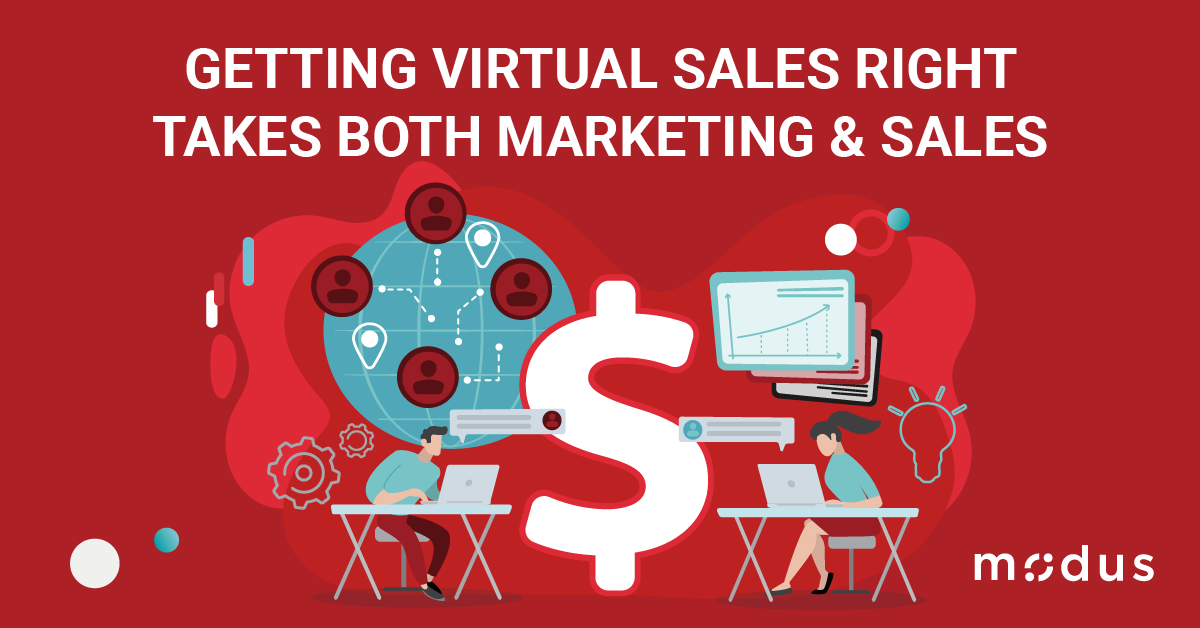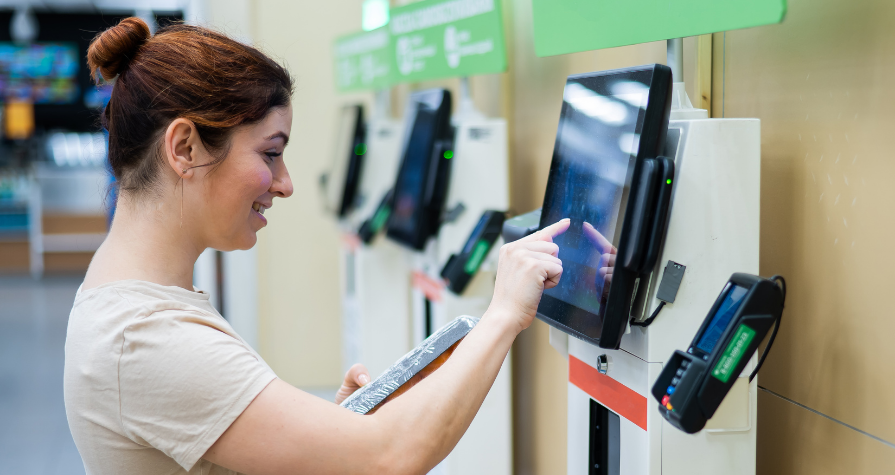
For years, field sellers have thought of themselves as road warriors. Yet at least 80% of your sales team is now selling differently. Virtually. It’s not just what they do, but who they are that’s changing.
Rethinking sales enablement around the content, tools, data, and infrastructure you need to sell is a key to providing the functional capabilities that sellers need to make this transition successfully to thrive in this environment. Especially since it may stick, even when in-person meetings become possible again.
Where only 10% of sales leaders were considering a permanent shift to virtual sales in March, Gartner found that by June consideration had risen to 25%. A permanent transition to virtual selling is likely to move even higher as the pandemic persists.
The sales challenge for companies is twofold. Buyers have changed and virtual selling changes the way sales get done. So, how do you best motivate field sellers who are no longer selling in the field?
Answering the challenge will require commitment by both marketing and sales teams to meet buyers where they are now to win more deals and grow existing customer relationships.
Marketers Can Help Sales Reps Pivot to Unite with Buyers
After 5 months, it’s obvious that no matter how much we would like to, the return to “normal” won’t be what it was before March. Buyers have changed as their needs have changed. The 2020 B2B Buyer Behavior Study found that while 47% of buyers say they have put off purchases, the majority say the current crisis has not disrupted purchase plans. It may have even increased the urgency of their purchasing.
If marketers haven’t revisited segmentation, go-to-market strategies, and journey mapping since March, it’s imperative to do so. And not just once, but ongoingly as the environment and expectations continue to change.
As of June, B2B buyers said that they’re doing more research (77%) and expecting more relevance and personalization (76%) from their interactions with vendors. Whether that’s with marketing or sales. Nearly all of them (82%) said that purchase decisions make progress based on changing business needs and priorities.
It may also be true that things have changed so much that your buyers don’t know how to buy as it’s not the same process it used to be given the reorganization their company has experienced.
This means that marketers need to do the work to update relevant personas and communicate the changes they discover to sales teams. Based on how marketers shift their messaging and go-to-market strategies will inform sales process. It’s never been more important to align the two functions as one feeds the other.
This presents a huge opportunity for marketers to re-learn how buyers buy. Buying groups have also changed. The breadth and scope of what they buy may have changed. This may also mean that the access level your sales reps can reach has changed. If buying decisions have moved upstream, have you shifted your strategy and prepared your sellers to have influential conversations at that level?
Increasingly, marketing data is critical to shaping the sales organization and process design. Marketing needs to supply the data that informs playbooks based on what buyers are currently responding to. Looking at the data from marketing automation overlaid with content usage and engagement data from your sales enablement platform provides the foundation for strategic insights that will help sellers unite with buyers.
Rethink Sales Enablement to Focus on the Delivery
Good selling is good selling—whether done in-person or virtually. The challenge to overcome is in the delivery. Virtual selling is not the same as in-person selling. Many field reps achieved great results based on the interpersonal relationships they built in face-to-face meetings.
Moving to a digital sales environment has unmasked the fundamental sales skills that weren’t sufficiently developed but could be overcome by charisma and relationship building skills.
Correcting this deficiency is best done with an aim to improve digital dexterity and strength in data analytics. Sales enablement can help with both, but it also adds tools that help with discovery and buyer engagement and relationship building – three important things buyers say are lacking in their virtual interactions with sellers per research by Rain Group.
Sales enablement should deliver content and just-in-time learning to sales reps, but it also should serve as a platform for tools and a bridge between systems that enables smooth transitions from in-person to remote selling. If approached from this perspective, you’ll be meeting buyers’ needs today, as well as future proofing your sales operations as it’s becoming more unlikely selling will totally revert to pre-pandemic circumstances.
From a sales tool perspective, what’s needed is a support structure for your reps that helps them build engagement and deliver clear value that moves buying conversations forward.
Sales Tools to Use Before a Virtual Meeting
Digitized Sales Playbooks are a way to customize your sales hub and organize your reps around what buyers expect at each stage and how to engage them. This includes microlearning modules that quickly inform a rep about conducting discovery with a buyer persona, which content to use and why, and outcomes to achieve to move the deal forward. Today, this also includes bite-sized training on how to be more compelling and what to do to establish rapport via video conferencing.
Prior to a meeting, the focus should be on helping reps become sales ready and establishing competency. Sales hubs that incorporate coaching through self-video pitches that can be quickly recorded and sent off to their manager for ratings and feedback can help build confidence.
An agenda planning tool that enables reps to group together resources to share with buyers during a meeting based on their planning and preparation ensures there’s no fumbling to find things during the call.
Sales Tools to Use During a Virtual Meeting
As noted at the beginning of this article, personalization has gained importance with virtual selling. Buyers have shorter attention spans and tend to be more distracted than when meeting in person.
Interactive tools that engage them in defining their needs, assessing the value of change and short, as well as long-term, impact will keep their attention and position your sellers as trusted advisors. Value assessments, more than just simple ROI calculators, are the top preferred content type from vendors content, coming in second behind independent thought leadership, per the Gartner End-User Buying Behavior Survey.
Even better, a value assessment can provide the structure for more in-depth discovery that doesn’t feel like an inquisition to the buyer. Involving them in the discovery, rather than depending on them to provide it, enhances personalization. That they can watch the assessment evolve with new inputs helps them to see the rep is listening to them—something else buyers say reps don’t do enough.
A recent use case from a Modus customer highlights a selling situation where the seller’s best shot at winning the deal is dependent on the extreme personalization the rep can provide during the first meeting. By customizing an assessment tool to align as closely as possible with buyer needs and desired outcomes, they’re using capabilities available in their Sales Hub to raise the odds on winning deals from a higher percentage of meetings.
Sales Tools to Use After a Virtual Meeting
Most often, at the conclusion of a meeting, the seller needs to send additional resources and confirm next steps with a buyer. A Sales Hub that enables them to spin up a microsite, customized for that buyer, and send them a link via email provides a vehicle for continued engagement that helps to move deals forward.
Gartner has termed this capability a Digital Sales Room (DSR). It’s an online space that allows buyers to come together, collaborate on content with each other and their sales rep, and keep a record of the interactions that move the deal along. With alerts that notify all involved of any comments in the chat or additions to resources, there’s no more searching for information in emails or ensuring that everyone is kept in the loop.
A DSR can become a powerful tool that builds engagement after one meeting and is used to shorten the span of time before the next meeting. Members of the buying group that come in and out of a deal, as needed, can quickly get up to speed and participate without the group needing to back track.
Cross Collaboration Between Marketing and Sales is Essential
With change a constant, marketers and sellers must work together to understand and meet buyer expectations and needs. Growth of our companies depends on it. A Sales Hub provides the capability for marketers to supply sales with the content they need for each buying situation, as well as the analytics to understand and validate what buyers are viewing and responding to. For sellers, a Sales Hub provides instant access to the resources they need to make the shift to virtual sales before, during and after buyer conversations. The successful orchestration of the two teams is a big part of how sales get done.
To learn more about how to help your reps have better buyer conversations, watch this 30-minute webinar about how content and tools are used to get sales done—and how to make it easier on marketers, sellers, and buyers.



